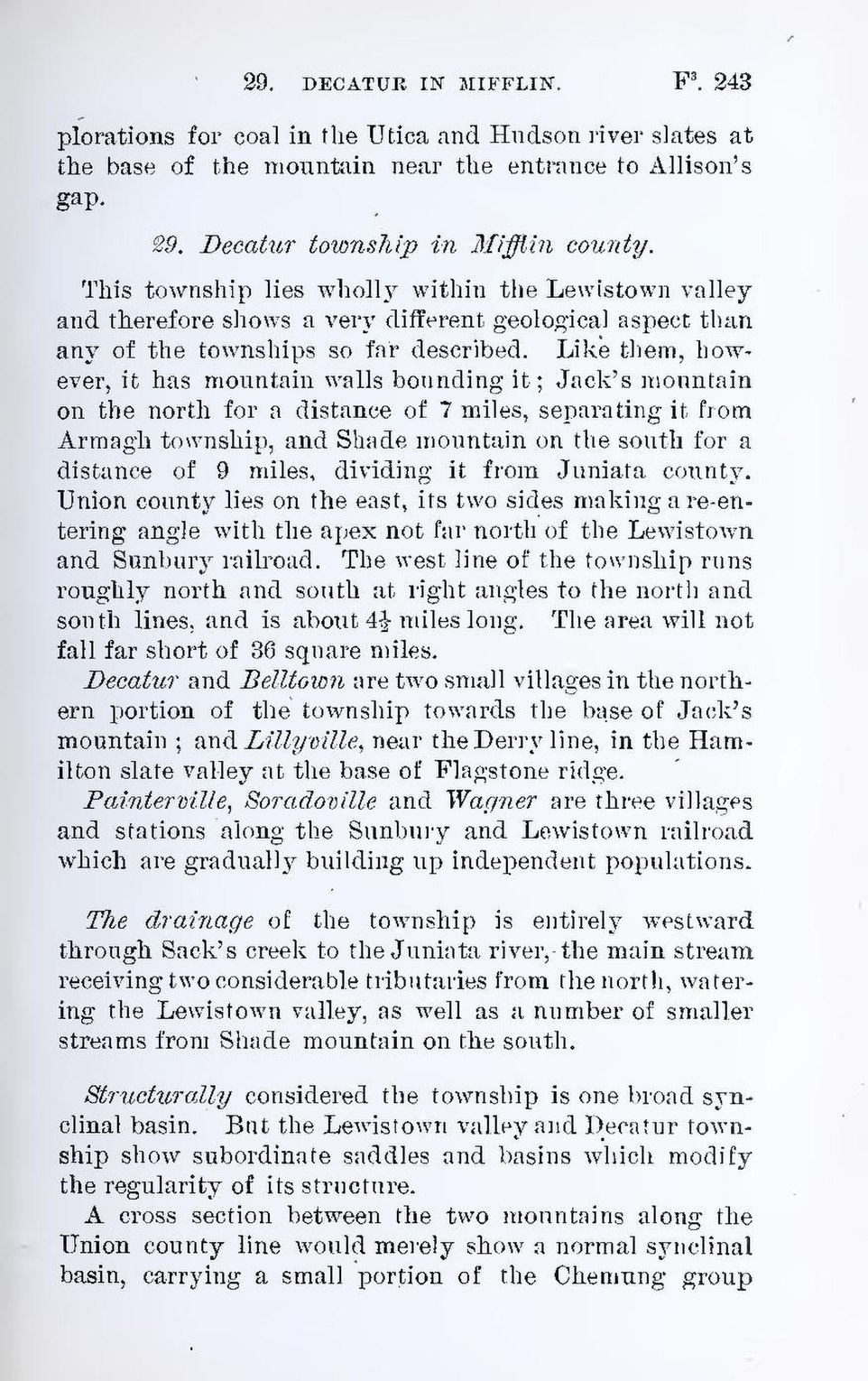plorations for coal in the Utica and Hudson river slates at the base of the mountain near the entrance to Allison’s gap.
29. Decatur township in Mifflin county.
This township lies wholly within the Lewistown valley and therefore shows a very different geological aspect than any of the townships so far described. Like them, however, it has mountain walls bounding it; Jack’s mountain on the north for a distance of 7 miles, separating it from Armagh township, and Shade mountain on the south for a distance of 9 miles, dividing it from Juniata county. Union county lies on the east, its two sides making a re-entering angle with the apex not far north of the Lewistown and Sunbury railroad. The west line of the township runs roughly north and south at right angles to the north and south lines. and is about 4½ miles long. The area will not fall far short of 36 square miles.
Decatur and Belltown are two small villages in the northern portion of the township towards the base of Jack’s mountain; and Lillyville, near the Derry line, in the Hamilton slate valley at the base of Flagstone ridge.
Painterville, Soradoville and Wagner are three villages and stations along the Sunbury and Lewistown railroad which are gradually building up independent populations.
The drainage of the township is entirely westward through Sack’s creek to the Juniata river, the main stream receiving two considerable tributaries from the north, watering the Lewistown valley, as well as a number of smaller streams from Shade mountain on the south.
Structurally considered the township is one broad synclinal basin. But the Lewistown valley and Decatur township show subordinate saddles and basins which modify the regularity of its structure.
A cross section between the two mountains along the Union county line would merely show a normal synclinal basin, carrying a small portion of the Chemung group
